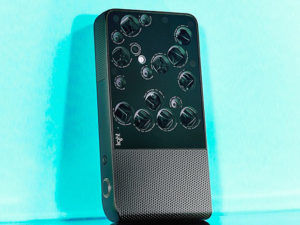Cuba is a remarkable destination for travel photographers! This small island has all the iconic images we expect–beautiful but crumbling art deco buildings, American cars from the late 1950s, unspoiled Caribbean beaches–but there are so many more opportunities to connect with and photograph a culture and a nation that is undergoing very rapid change.
Lovers embrace on Havana’s Malecon at sunset. Buy this photo
European and Latin American travelers already know about Cuba’s charms and have been coming here for decades. But to many Americans, Cuba has felt off-limits, a destination forbidden by our government. I’m going to steer clear of the political issues in this post, but it must be noted that President Trump’s recent orders to tighten Cuba travel restrictions previously relaxed under the Obama administration will make it more difficult once again to visit. The recent changes do not outlaw all travel to Cuba, but most Americans will need to visit under an official “People-to-People Cultural Exchange” program. The operators of these programs may have to revise their itineraries due to new prohibitions against travel to any facilities owned by the Cuban military, and the prices of these programs may rise as regularly scheduled commercial flights to the island could revert to more expensive charter flights. But it is still quite straightforward, and 100% legal, for US residents to visit Cuba under one of these People-to-People programs.
I do not recommend trying to circumvent the licensing requirements. This can lead to lots of trouble for the unlicensed American traveler later down the road: hefty fines, lots of questions to be answered, and restrictions on one’s future travel possibilities. Instead, go with one of the many travel companies who operate People-to-People Cultural Exchanges. These are legal trips licensed by the US government for the purposes of the people from the US and Cuba getting to know each other. These trips do require that most of the traveler’s time be spent interacting with Cuban people of all walks of life, but isn’t that what we travel photographers seek, anyway?
We spent a delightful 1.5 weeks on one of these cultural exchange programs run by Grand Circle Foundation. They offer a variety of different Cuban itineraries, and we would have preferred one of the longer ones, but schedule limitations required us to take the shorter trip. This itinerary brought us to the capital Havana and to the rural Viñales Valley, the center of tobacco production and ecotourism on the island. Here are some highlights from this travel photographer’s perspective.

Our small group was invited to attend a rehearsal by Opera de la Calle. Held in a decrepit art deco building in downtown Havana, the spirited performance combined song, dance, and performance art. Buy this photo

Getting to know some of the locals while visiting the exuberant art installation by Jose Fuster known as Fusterlandia. Buy this photo
We left Havana’s vibrant urban vibe for a three-day excursion to the rural Viñales Valley. Exploring this famed tobacco-producing region from our base at an eco-tourism village within a sustainable agricultural collective, we enjoyed hiking through terrain unlike any we’d seen elsewhere, taking in views of local wildlife and flowers along the way.
The picturesque Viñales Valley is noted for its mogotes, dramatic hilly outcroppings. Buy this photo
Tobacco farmer Benito enjoying the fruit of his labor. Buy this photo
Cuba’s national bird, the brightly colored Tocororo. Buy this photo
The warm and engaging proprietor of Maria’s Cafe surveys her domain. Buy this photo
During a Viñales Valley elementary school visit, we met the staff and great kids in the classrooms! Three classes for different ages shared one old church building. Buy this photo
We got to know a friendly and enterprising rural family during a home-hosted dinner. This is their typical family transportation. Buy this photo
Back in Havana, we strolled through the city’s Old Town. Buy this photo
A special performance of Santeria singing and dance. Santeria combines Roman Catholicism with African religions to form a uniquely Cuban hybrid. Buy this photo
This selection of photos barely scratches the surface of all the wonderful, unique photographic opportunities awaiting you in Cuba now. Go soon, though, because for better or for worse, this nation is transitioning quickly into a very different future.
Nearly a year ago, the first commercial flight from the US to Cuba in over 50 years had just taken off from Florida: NY Times on US flights to Cuba. For many Cubans, this seemed like the dawn of a new era that would mean a partial easing of a great deal of economic hardship suffered under the US embargo. Instead, we are seeing a regression of US/Cuban relations to a situation more like the Cold War era policy. It’s anybody’s guess as to how this situation will evolve over the coming years. On the one hand, it’s possible a new US or Cuban administration could open up relations considerably, leading to huge continuing changes in Cuban society. On the other hand, we could see further tightening on travel to Cuba, making it very difficult for Americans to visit at all. I’m eager to visit again in a few years to meet more Cuban people and observe how their lives have changed in the interim. But if you prefer to visit–and photograph–tiny colorful sidewalk cafes rather than Starbucks, authentic cultural interactions rather than slickly produced touristic shows, and wide open vistas rather than lavish resort developments, then now is the time to book your trip to Cuba! Depending on the political environment, now could even be your last chance to visit for some years.
Have you been to Cuba? What surprised you there? What were some of your favorite photographic subjects? If you haven’t been yet, what images do you associate with this island nation? Please share your thoughts in the comment box at the end of this post.
































